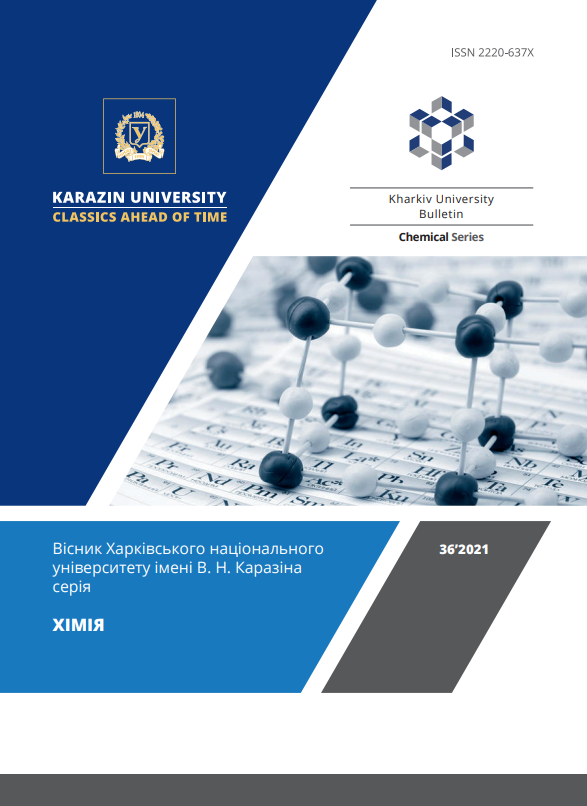Concentration and temperature empirical relationships of the electrical conductivity of electrolyte solutions
Abstract
We have considered the dependences of the specific (κ) and molar (Λ) electrical conductivity (EC) of aqueous electrolyte solutions on the molar concentration and temperature for sulfates of divalent metals (Mn, Co, Ni, Cu, Zn, Cd) in a wide concentration range at 5 – 35°C. To describe such systems we propose a modified cubic equation (MCE): κ = C∙c3k + Q∙c2k + L∙ck, where C, Q, L, k are empirical parameters, fixed parameter k = 0.5 has been considered as well. From the correlation between the calculated parameters we assume that two of them are sufficient. The maximum of specific EC (κm) and the corresponding concentration (cm) have been calculated. We also assume that the systems under study are isomorphic in the normalized coordinates (κ/κm via c/cm). For the dependences like κ = A∙cx + B∙cy it is shown that x = 1 is a good approximation over the generalized sample. Empirical dependences with y = 5/4 and y = 4/3 are also considered. It is shown that they give comparable results to MCE.
The proposed approach is tested on EC data of aqueous solutions of some salts. Similar two-parameter κ(κm, cm; c) equations of other authors have been considered. In order to describe the dependence of the specific EC on temperature and concentration we propose an equation κ = (A25 + a∙θ)∙c – (B25 + b∙θ)∙c5/4, where θ is the reduced temperature and A25, a, B25 and b are empirical parameters. Also a generalized equation for the molar EC of concentrated electrolyte solutions is proposed: Λ(Λ*, Λm, cm; c), where Λ* is the effective limiting molar EC, and Λm is the molar EC at c = cm. It was found that Λ* and Λm depend linearly on temperature. The average value of the exponent is close to 1/3, which brings the generalized molar EC equation closer to the equation derived from the quasi-lattice model of electrolyte solutions.
Downloads
References
Montes-Campos, H.; Kondrat, S.; Rilo, E.; Cabeza, O.; Varela, L. M. Random-Alloy Model for the Conductivity of Ionic Liquid–Solvent Mixtures. J. Phys. Chem. 2020, 124, 11754-11759. https://doi.org/10.1021/acs.jpcc.0c00531
Odinaev S., Akdodov D. M., Idibegzoda Kh. I. Numerically Calculating the Concentration and Temperature Dependences of the Electrical Conductivity of Aqueous Electrolyte Solutions. Russian Journal of Physical Chemistry, 2019, 93(6), 1171-1177. https://doi.org/10.1134/S0036024419060232
Casteel J.F., Amis E.S. Specific Conductance of Concentrated Solutions of Magnesium Salts in Water-Ethanol System. J. Chem. Eng. Data 1972, 17(1), 55-59. https://doi.org/10.1021/je60052a029
Rogac M.B. Electrical Conductivity of Concentrated Aqueous Solutions of Divalent Metal Sulfates. J. Chem. Eng. Data 2008, 53, 1355-1359. https://doi.org/10.1021/je8001255
Isono T. Density, Viscosity, and Electrolytic Conductivity of Concentrated Aqueous Electrolyte Solutions at Several Temperatures. Alkaline-Earth Chlorides, LaCl3, Na2SO4, NaNO3, NaBr, KNO3, KBr and Cd(NO3)2 J. Chem. Eng. Data 1984, 29(1), 45-52. https://doi.org/10.1021/je00035a016
De Diego, A.; Madariaga, J. M.; Chapela, E. Empirical model of general application to fit (k, c, T) experimental data from concentrated aqueous electrolyte solutions. Electrochim. Acta 1997, 42, 1449-1456.
Varela L.M., Carrete J., García M., Gallego L.J., Turmine M., Rilo E., Cabeza O. Pseudolattice Theory of Charge Transport in Ionic Solutions: Corresponding States Law for the Electric Conductivity. Fluid Phase Equilibria, 2010, 298, 280-286. https://doi.org/10.1016/j.fluid.2010.08.013
Gamburg Yu. D. Specific Conductivity of Electrolyte Solutions as a Function of Concentration. Russian Journal of Electrochemistry, 2015, 51(4), 380. https://doi.org/10.1134/S1023193515040047
Shestakov A. F., Yudina A. V., Tulibaeva G. Z., Khatmullina K. G., Dorofeeva T. V., Yarmolenko O. V. Empirical Formula for the Concentration Dependence of the Conductivity of Organic Electrolytes for Lithium Power Sources in the Vicinity of a Maximum. Russian Journal of Electrochemistry, 2014, 50(11), 1027-1035. https://doi.org/10.1134/S102319351411010X
Artemkina Y.M., Sherbakov V.V. Description of the Concentration Dependence of the Electrical Conductivity of Aqueous Solutions of Strong Electrolytes. Advances in chemistry and chemical technology, 2011, 25(2) 22-26. [Rus]
Benouar A., Kameche M., Bouhlala M. A. Molar Conductivities of Concentrated Lithium Chloride–Glycerol Solutions at Low and High Temperatures: Application of a Quasi-Lattice Model. Physics and Chemistry of Liquids, 2016, 54(1), 62-73. https://doi.org/10.1080/00319104.2015.1068660




